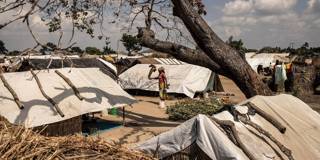This week’s World Bank spring meetings offer a valuable opportunity to reflect on the International Development Association’s critical role as a source of hope for those most in need – and commit to enhancing its impact even further. That means not only replenishing its resources, but also ensuring that its resources can be best used.
COPENHAGEN – This week’s World Bank spring meetings will kick-start the replenishment of the International Development Association – the largest source of development finance for the world’s poorest people. The event cannot come soon enough. With extreme poverty, climate change, and a worsening debt crisis jeopardizing progress toward the United Nations Sustainable Development Goals (SDGs), IDA is more important than ever.
For many recipient countries, IDA often represents the only reliable, sustainable source of development finance. For donors, it offers good value for money: for every dollar mobilized through IDA, recipient countries receive around $4 to support their development. But as governments seek an ambitious replenishment of IDA’s resources this year, we must maximize the impact of IDA dollars already in circulation.
With up to two-thirds of those living in extreme poverty expected to reside in fragile and conflict-affected countries by 2030, successful implementation of IDA-supported development projects in challenging contexts is vital. But, as new research by the International Rescue Committee (IRC) shows, disbursing IDA funds to projects that positively affect people’s lives must overcome major barriers. During one recent IDA cycle, around 50% of its financing commitments in conflict-affected least-developed countries were not disbursed. The IRC’s research highlights limited institutional capacity, especially in conflict-affected countries.

COPENHAGEN – This week’s World Bank spring meetings will kick-start the replenishment of the International Development Association – the largest source of development finance for the world’s poorest people. The event cannot come soon enough. With extreme poverty, climate change, and a worsening debt crisis jeopardizing progress toward the United Nations Sustainable Development Goals (SDGs), IDA is more important than ever.
For many recipient countries, IDA often represents the only reliable, sustainable source of development finance. For donors, it offers good value for money: for every dollar mobilized through IDA, recipient countries receive around $4 to support their development. But as governments seek an ambitious replenishment of IDA’s resources this year, we must maximize the impact of IDA dollars already in circulation.
With up to two-thirds of those living in extreme poverty expected to reside in fragile and conflict-affected countries by 2030, successful implementation of IDA-supported development projects in challenging contexts is vital. But, as new research by the International Rescue Committee (IRC) shows, disbursing IDA funds to projects that positively affect people’s lives must overcome major barriers. During one recent IDA cycle, around 50% of its financing commitments in conflict-affected least-developed countries were not disbursed. The IRC’s research highlights limited institutional capacity, especially in conflict-affected countries.